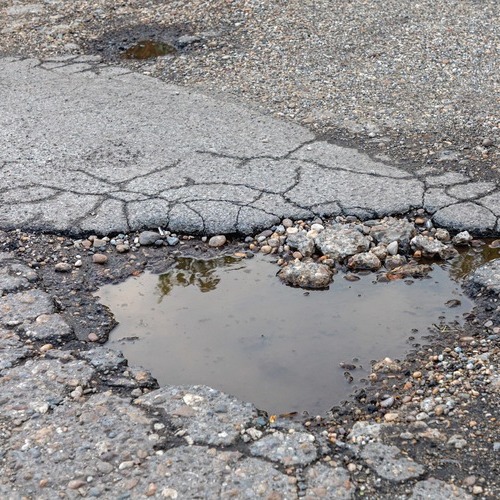
Is it time for a pothole repair?
The road less traveled is probably a lot smoother than the one with a constant traffic flow, and the road less traveled probably hasn’t had or may never need pothole repair. In Waco and Temple, TX, most of us travel a lot, and because of that, we find ourselves looking for help repairing potholes, whether on the road or even in our driveways. When you find yourself looking for this kind of repair, you probably have some questions, such as what type of material is needed to perform those repairs.
What causes potholes?
Repairs for potholes are needed due to the occurrence of three major factors. Those three factors are:
- Crack Surface
- Water
- Vehicle Traffic
A pothole begins with a small surface crack on the roadway. Over time, that crack expands as traffic drives over it. Then, there are two ways that this small crack further deteriorates:
- Rain: As it rains, or maybe water from the lawn sprinklers, and covers the road surface, the water gets into the crack and then seeps under the surface. During the winter, that water will freeze under the surface, thaw, re-freeze, and re-thaw. As traffic drives over the surface with frozen water under it, it cracks the surface more, and chunks of asphalt come out, and you have a pothole.
- Traffic: Then there is the traffic factor. In dry weather, as traffic runs over the cracks, they get bigger, and small chunks of asphalt come out, and before you know it, you have a pothole.
How do you fix potholes in the road?
Every city, county, and state may have different guidelines and methods for pothole repairs, but the four most commonly used are:
- Throw-and-Go Pothole Repair Method: This is the most commonly used method because it is the least expensive and the quickest. Even with debris or water in the pothole, this method is used. It is filled with patching-approved road material, tamped down by hand, and left for the traffic flow to pound it down.
- Throw-and-Roll Pothole Repair Method: This is considered a superior alternative to the above-described method but uses the same technique. Workers use an approved patching material to fill the potholes, and then the roadcrew’s maintenance truck drives over them, compounding them down to make them tight.
- Semi-Permanent Pothole Repair Method: This method is considered the best because it covers the full depth of the pothole and the surrounding affected area. First, all debris and water are removed from the pothole, and then the pothole is made square using hand tools. Next, the approved patching material fills the area, and workers use equipment like a vibratory plate to compact the material down.
- Spray-Injection Pothole Repair: The final pothole repair patching method used is spray injection, commonly focused on repairing diagonal cracks and potholes. Before this patching method starts, debris and water must be removed, and then a tack coating of binding material is sprayed along the sides of the pothole. Then, aggregate or asphalt is sprayed into the pothole. Next, a layer of aggregate or asphalt is applied. There aren’t any compacting steps to this method of pothole repair.
What is the best material to fill potholes?
Research and plenty of experience have proven that a mixture of aggregate and asphalt cement is the sturdiest pothole repair material. It can withstand extreme wear and tear and heavy traffic. This pothole repair method does not require road closures, so there is no disruption to traffic.
What is the cheapest way to fill potholes?
Most cities, counties, and states are on tight budgets these days, so the first step is to find the fastest way to complete a pothole repair job, which means less labor expense. The second step is to use the cheapest material, and loose gravel is a common material for pothole repairs.
The downside to this pothole repair method is that the gravel works out of the pothole and scatters, so repeated trips are needed to add more gravel, requiring more labor and materials. So, is it the cheapest way? Only the finance departments can verify this.
What is the proper way to fix a pothole?
The best pothole repair method for long-lasting results is the Semi-Permanent Pothole Repair Method, followed by the Spray Injection method if extending cracks still need to form a pothole.
Prevention is The Answer
Before roadways reached the point where pothole repairs were an absolute must, the local road authorities could take preventive steps. Those steps would include surveying the pavement frequently to identify any possible risk factors, ensuring proper and adequate drainage from the road surfaces and road shoulder, and forming the budget to afford and implement preventive maintenance.
But as the public, we can do things to help prevent potholes, which can cut back on the need for pothole repairs. We can avoid driving through puddles, driving cautiously on roads we’re not familiar with, keeping a safe distance between cars, avoiding driving through potholes when possible, and just practicing safe driving habits.
Our team is always available to help if you need pothole repair in Waco and Temple, TX. For more information, call today at 254-716-8685.
